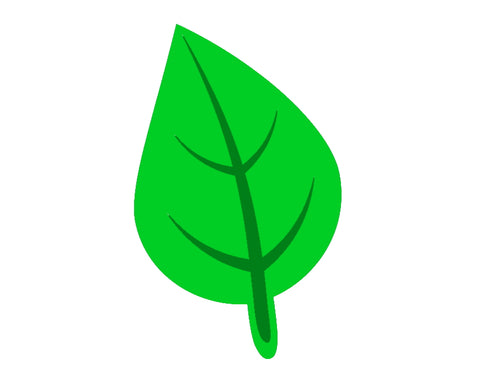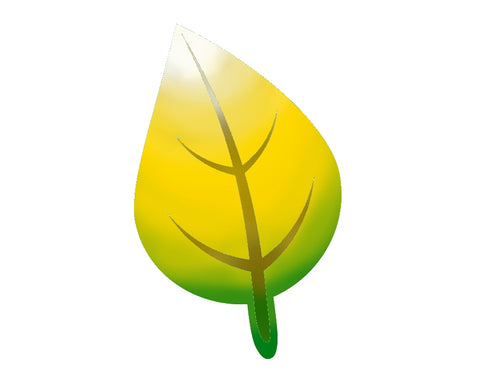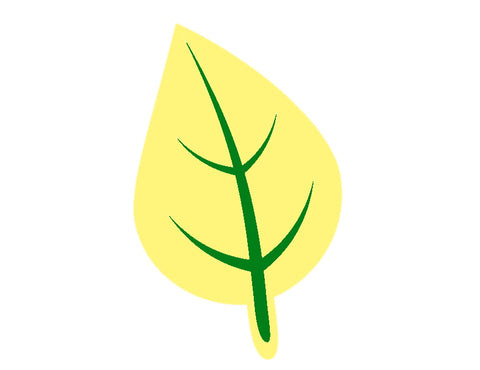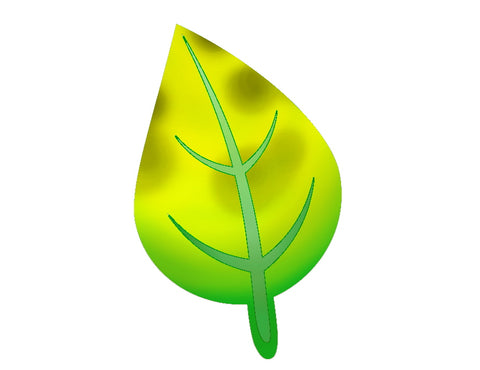Nutrient Deficiencies: Why Your Aquarium Plants Are Dying
Do you have the perfect planted aquarium setup, but your plants are still dying one by one? It could be from a lack of nutrients. Even if you are regularly dosing fertilizers, your plants might still be missing key building blocks that prevent them from growing and thriving. In this article, we want to teach how to recognize the first signs of nutrient deficiencies so that you can take appropriate measures before your plants reach death’s door.

Example of a normal, healthy plant leaf
Types of Plant Nutrient Deficiencies
Nitrogen Deficiency
Low nitrates are a common problem in planted tanks, especially with beginners in the aquarium hobby who have been taught to do routine water changes every week (without testing for the actual nitrate level). This habit, while fine for fish only tanks, can lead to a lack of nitrogen, even if you are regularly dosing fertilizers. Classic signs of nitrogen deficiency include old leaves turning yellow and translucent, especially starting at the leaf tips, as the plant consumes nutrients from its old leaves at the bottom in order to make new leaves at the top.

Signs of nitrogen deficiency on old leaves
Another reason why you may run into nitrogen deficiency is because you’re following the recommended fertilizer dosing instructions, but then four months later when the plants have grown to triple their original size, you’re still dosing the same amount. Just as you automatically feed more food if you add more fish to an aquarium or if they grow bigger over time, you need to feed your plants more as they get taller or propagate.
The same principle applies if you prune or remove a bunch of plants – make sure to lessen the amount of nitrogen provided. Our recommendation is to try and match the amount of fertilizer you use (whether it’s liquid fertilizers for plants that feed from the water column or root tabs for plants that feed from their roots) with your plants’ growth.
Now, if you see yellow or translucent leaves on a brand-new plant that was recently added to your aquarium, this may be a sign of melting, not nitrogen deficiency. Most plants purchased online or locally were grown emersed or out of water, and these emersed-grown leaves will melt away to make room for new, submersed-grown (or underwater-grown) leaves that look smaller and healthier. This melting effect may even occur if you buy a submersed-grown plant from another hobbyist because the plant needs time to get accustomed to your tank’s different water parameters.
For example, stem plants that are melting tend to lose their lower leaves, leaving a bare stem on bottom with new leaves on top. After it has fully converted to only submersed-grown leaves, you can cut off the healthy-looking top and replant it so that you won’t see the skinny stems anymore. Amazon swords, cryptocoryne plants, and stem plants are notorious for melting in new environments, whereas anubias and java fern are pretty hardy in comparison.
Iron Deficiency
Plants that lack iron display yellowing or paleness on their newest leaves with leaf veins that remain darker in color. The older leaves, on the other hand, usually look normal.

Signs of iron deficiency on new leaves
It is difficult to incorporate high concentrations of iron in typical fertilizers, so instead of dosing more all-in-one liquid fertilizer, buy an iron-specific supplement to treat your plants. Adding extra iron can also be used to enhance the color of red plants.
Potassium Deficiency
This condition is easy to diagnose because the plant’s leaves will develop distinctive pinholes that are sometimes rimmed with brown or yellow. Certain plants like java fern and anubias thrive in environments with more potassium, so watch out for those signs. You can buy a potassium-specific supplement, but we already fortify Easy Green with extra potassium to address such problems. Therefore, treatment can be a simple matter of just dosing more of our broad-spectrum fertilizer.

Signs of potassium deficiency on old leaves
Phosphate Deficiency
Phosphate is another macronutrient like nitrogen that plants consume in large quantities. Therefore, the older leaves are most affected and will start turning yellow with soggy brown patches. Green spots of algae may also form as they begin to break down the dying leaves. This condition is more uncommon, since fish foods like flakes contain phosphates. However, sometimes people will put phosphate-absorbing pads in their filters to prevent algae growth, and that ends up starving the plants of phosphate.

Signs of phosphate deficiency on old leaves
Magnesium Deficiency
Lack of magnesium looks similar to a lack of iron, where leaves turn lighter in color with dark veins, but in this case, the deficiency affects older leaves instead new ones. Sometimes the leaf edges may droop as well. Magnesium is typically included in most general-purpose fertilizers, so dose more of it as part of your fertilization routine or consider using a magnesium supplement or Epsom salts to supply this nutrient. Note: this condition is often related to calcium deficiencies.

Signs of magnesium deficiency on old leaves
Calcium Deficiency
If you see new leaves growing in a twisted, gnarled fashion, this is usually related to a calcium or water hardness issue. In fact, calcium, magnesium, and manganese deficiencies often coincide with low water hardness. If you have soft water or are using RO/DI (reverse osmosis de-ionized) water for your discus or crystal shrimp, you may need to add these minerals using special salts to keep your plants healthy. You can also gradually increase calcium levels and water hardness by putting crushed coral in the substrate or filter, adding Wonder Shell into the aquarium, or dosing Seachem Equilibrium minerals.

Signs of calcium deficiency on new leaves
How to Fix Nutrient Deficiencies
In order to properly treat your plants, identify the nutrient deficiency and how you’re going to fix it (e.g., add more fertilizer or specific supplements, increase the water hardness, feed more fish food, and/or remove some plants). If you choose to dose more fertilizer, make sure it has the nutrient you need. (For example, Easy Green doesn’t affect water hardness or calcium levels very much.)
Most deficiencies can be solved by increasing your dosage of all-in-one fertilizers because if you’re missing nitrogen, for instance, you’re likely missing other nutrients as well. If you only dose a nitrogen supplement, your plants will probably run out of other nutrients, and new deficiencies will start to pop up. However, dosing more Easy Green or Easy Root Tabs provides more of the macronutrients and micronutrients your plants need (and at all the right concentrations).
If you only get one fertilizer for your aquarium plants, we recommend Easy Green. We originally developed it for use in our store, as we wanted a fertilizer that is easy to use without having to measure different supplements, higher in nutrient concentration, and reasonably priced. This all-in-one liquid fertilizer contains all the essential nutrients your aquatic plants need to thrive so that you don’t have to figure it out yourself. Unlike other ammonia-based fertilizers, Easy Green is completely safe to use with fish, shrimp, snails, and other invertebrates.
Generally, it takes at least two to three weeks to see a difference in your plants and determine if your actions helped or hurt the situation. Based on the results, tune your fertilization schedule to match what the plants actually consume. Planted aquariums are an ever-evolving landscape with fertilizer needs that must change as plants grow over time, leaves are pruned, and plants are added or removed. Take care to examine your plants on a regular basis and jump on any nutrient deficiencies, and you’ll create a beautiful, thriving planted aquarium.
For a quick reference guide, get our free infographic to plant nutrient deficiencies here:




